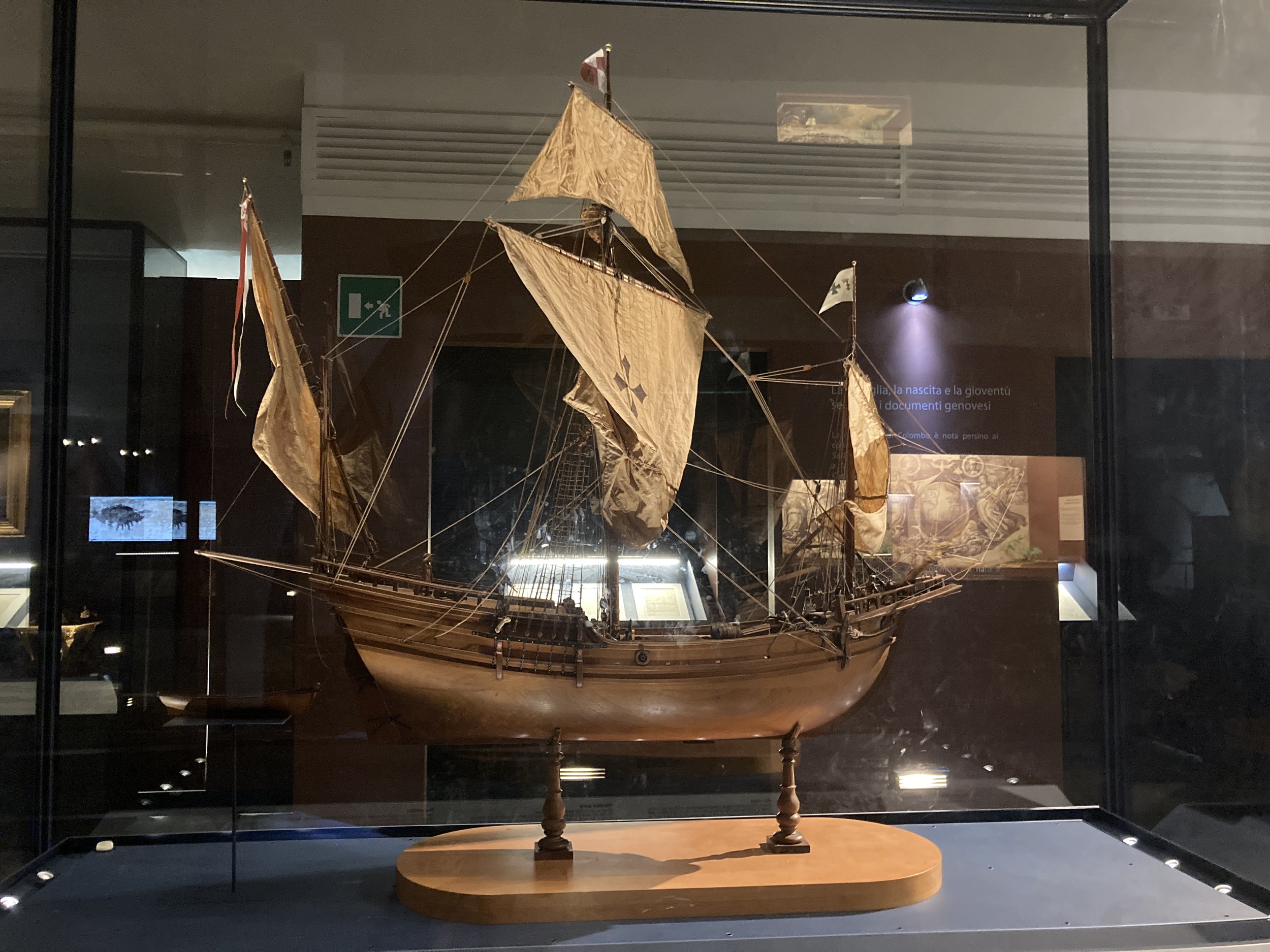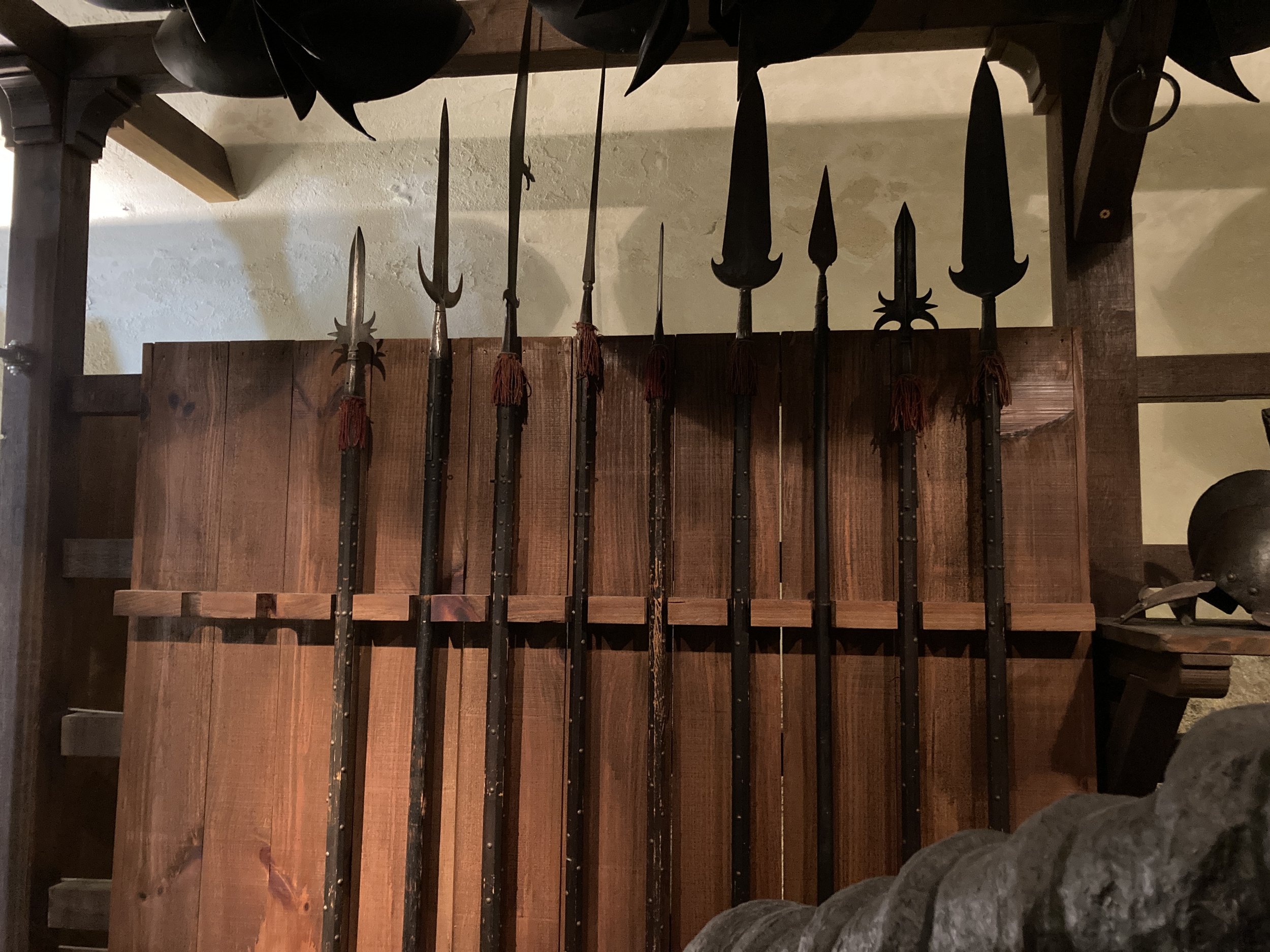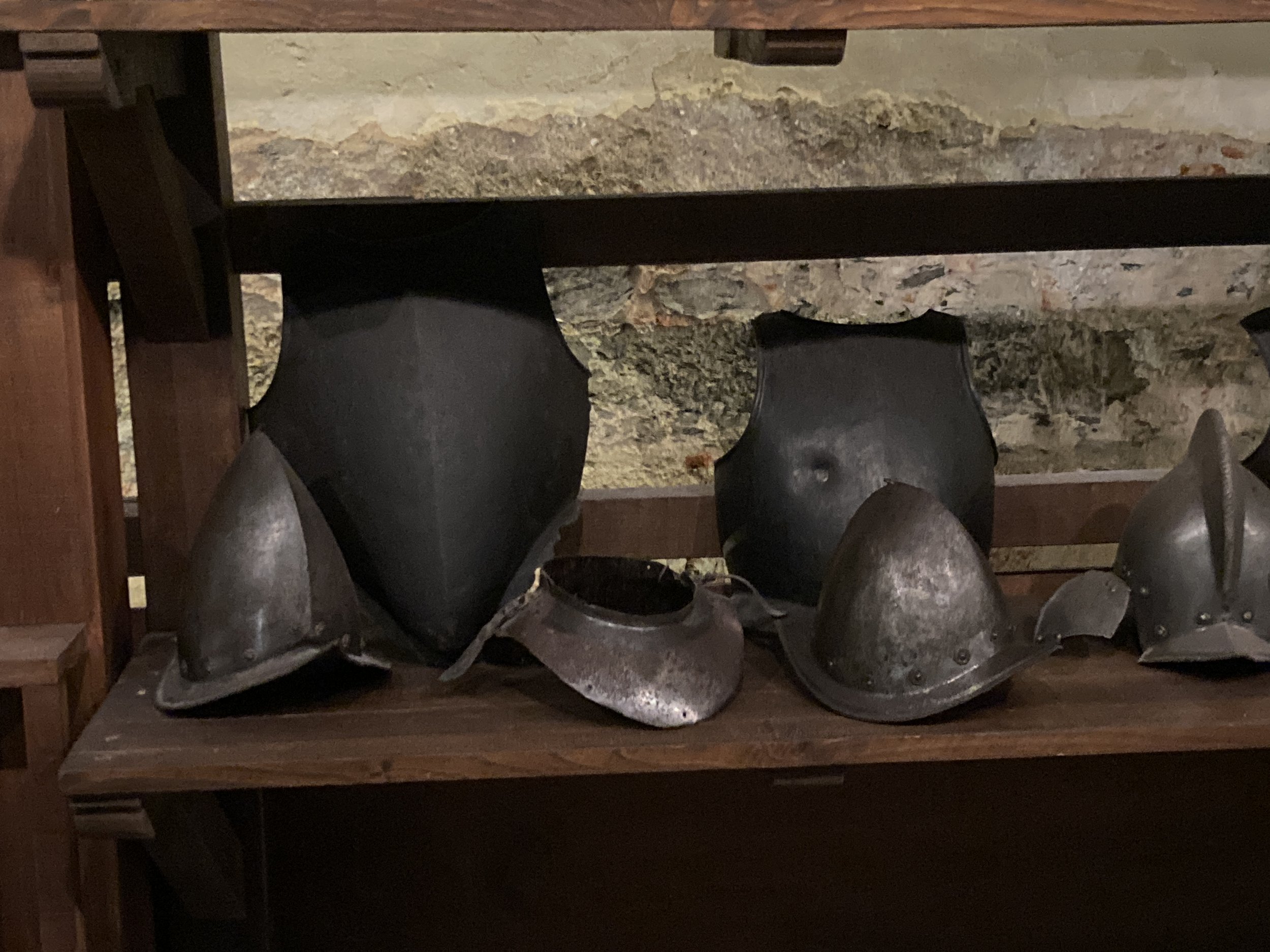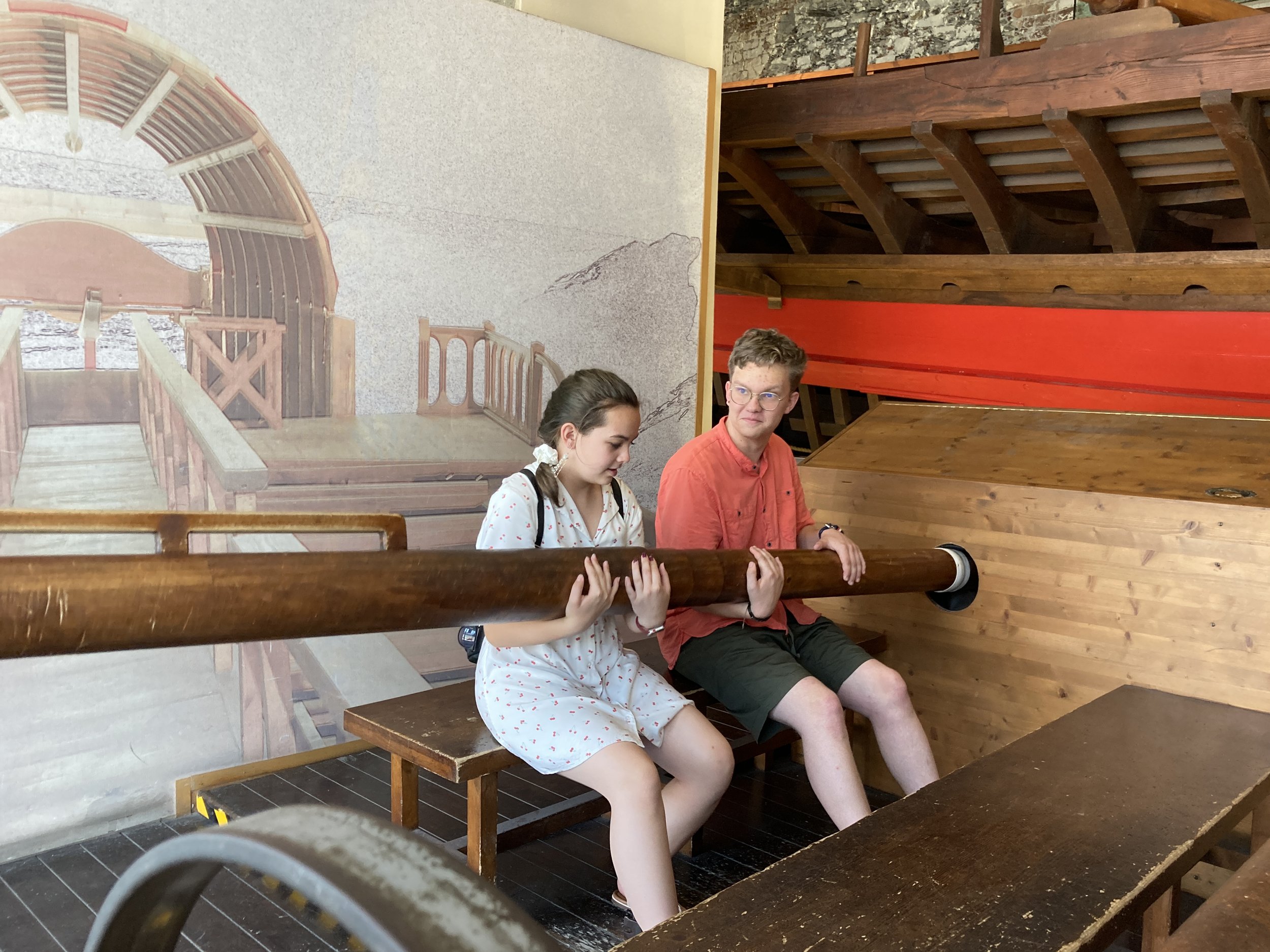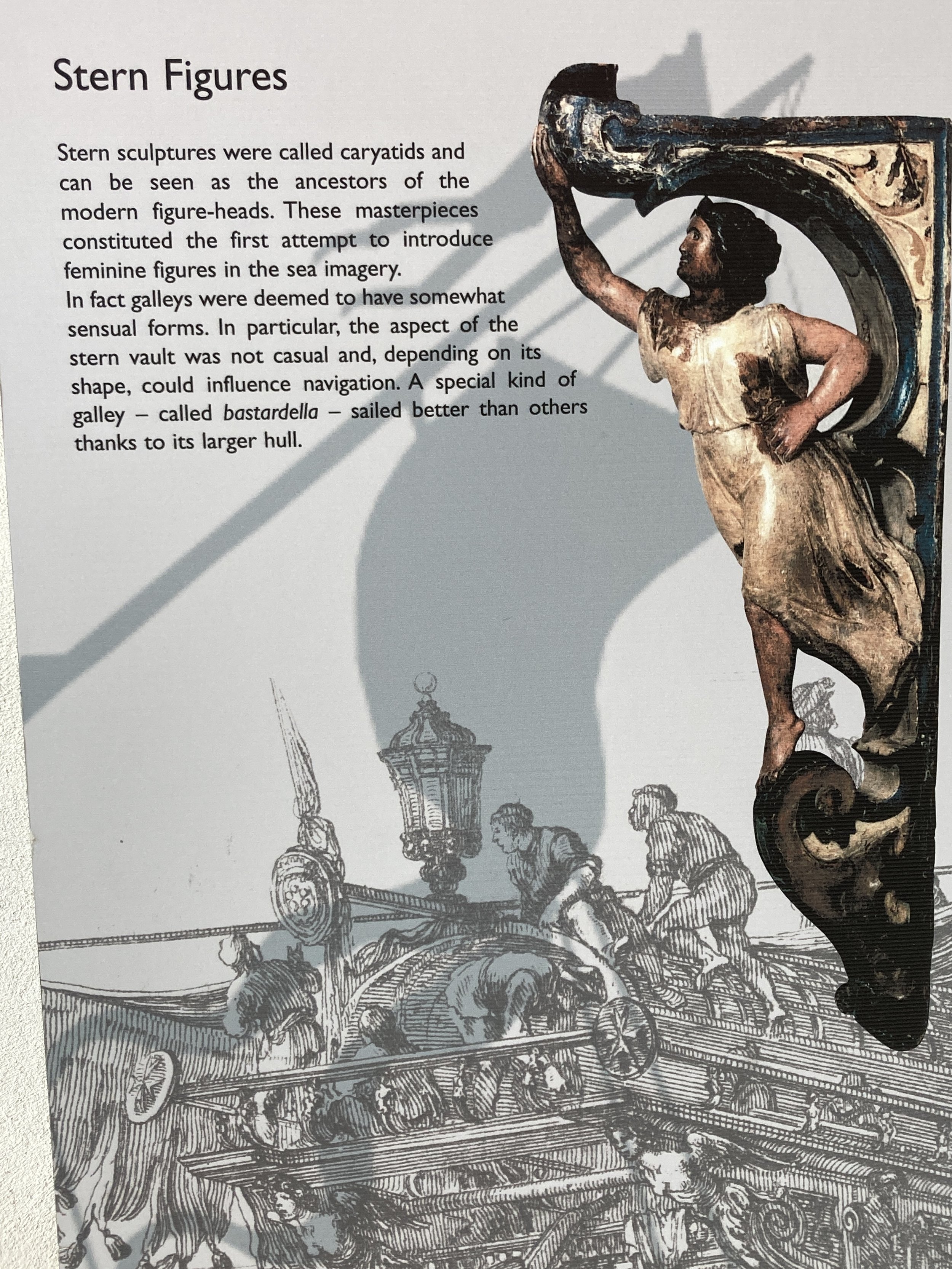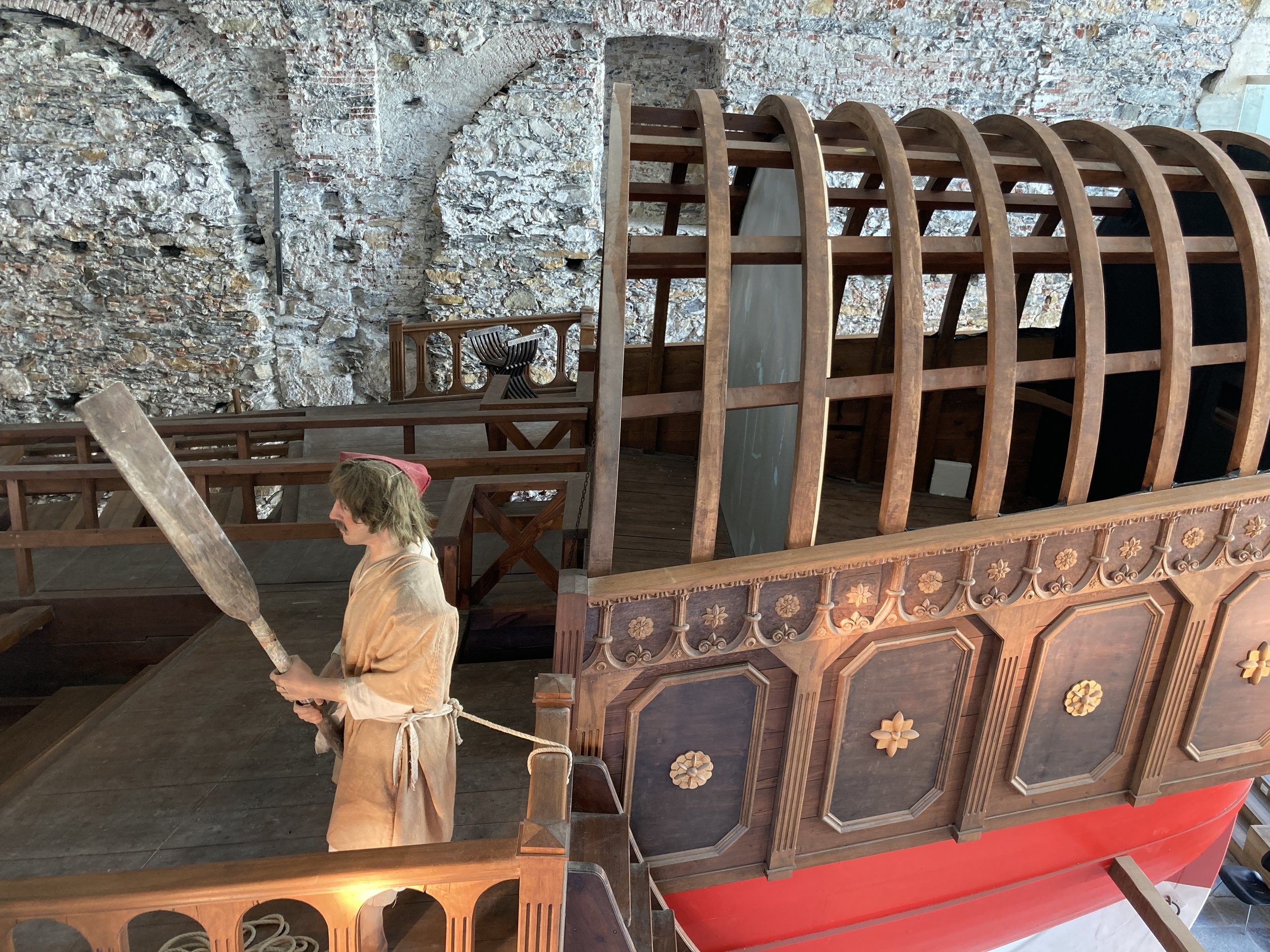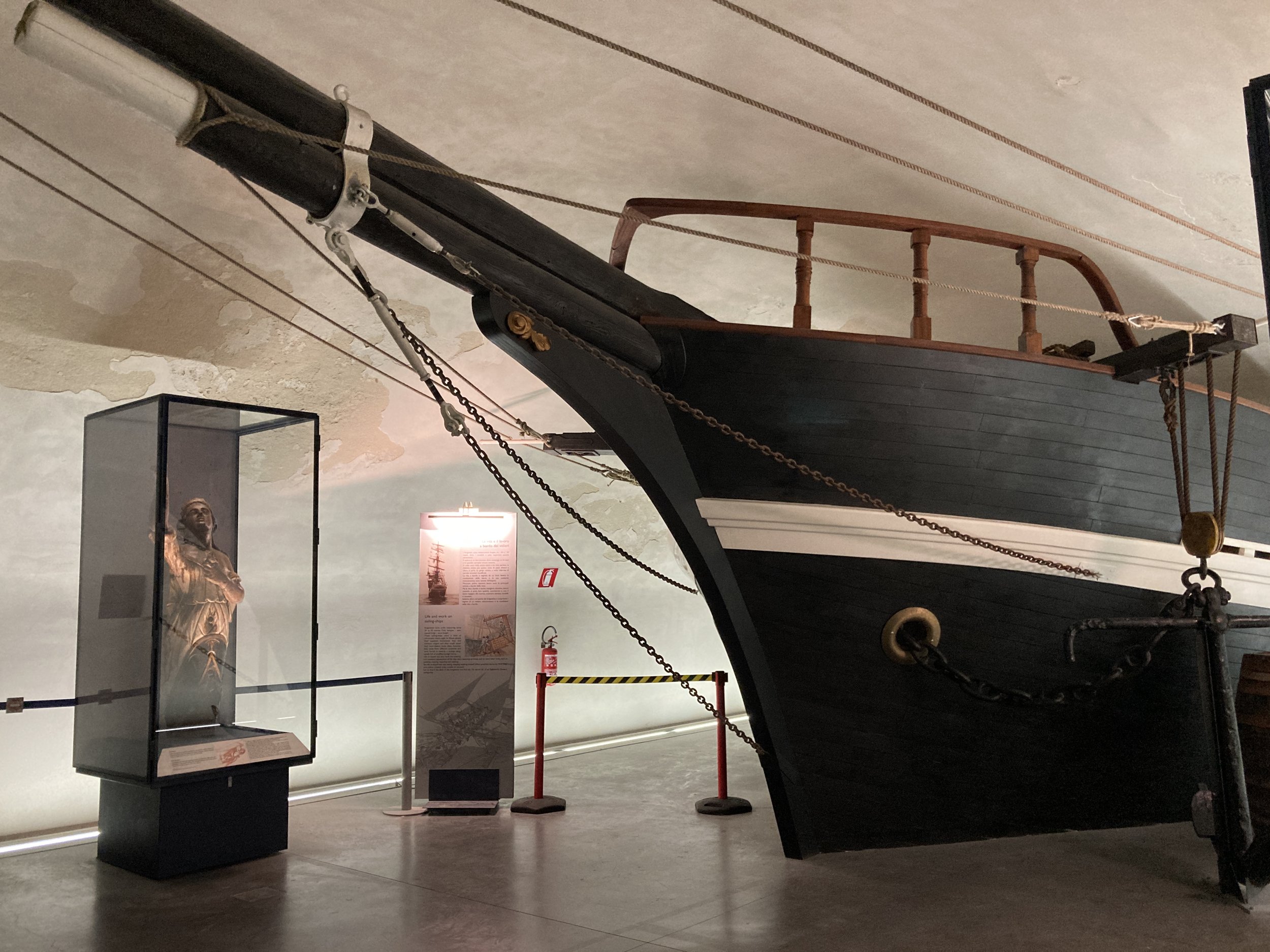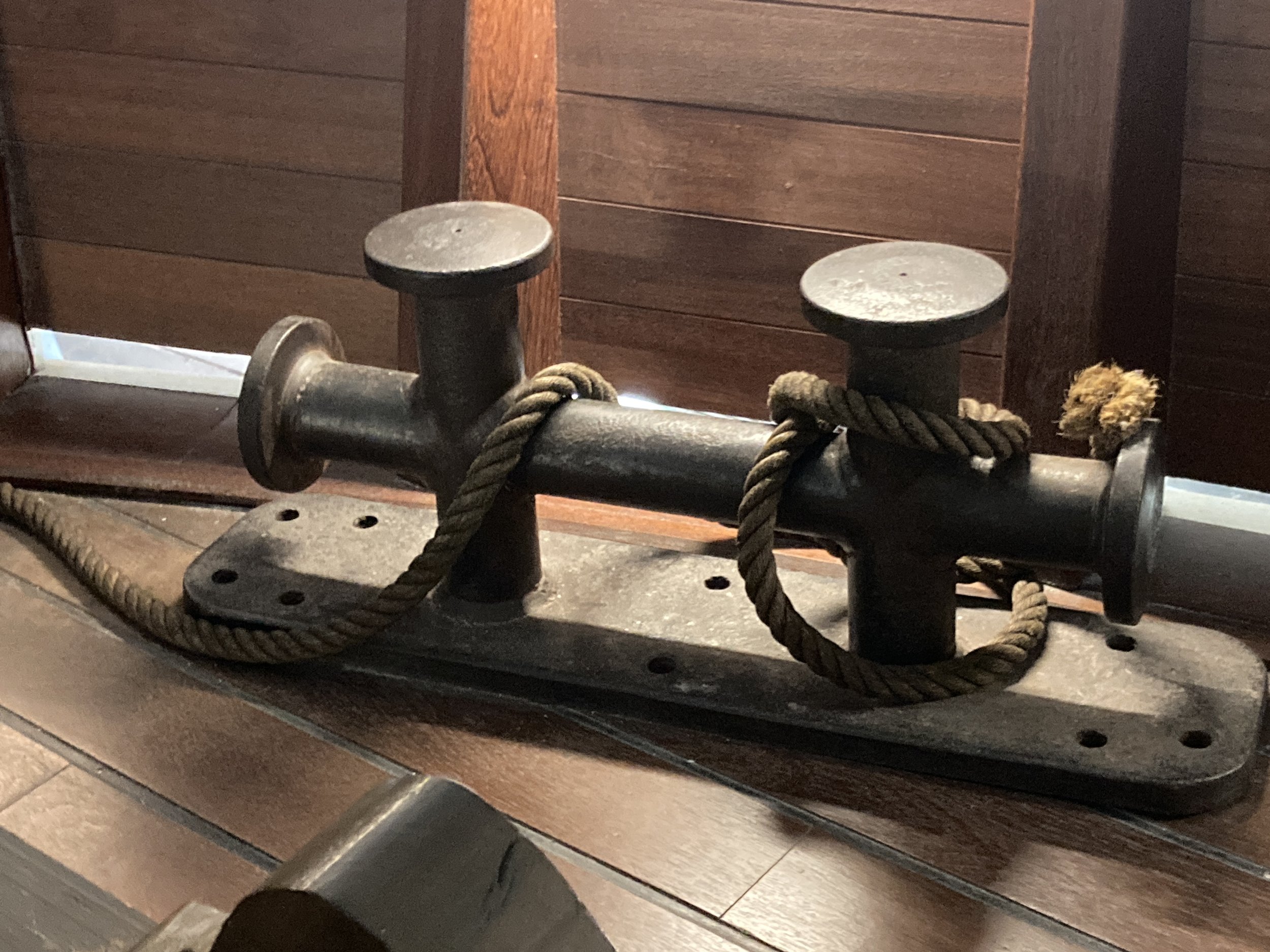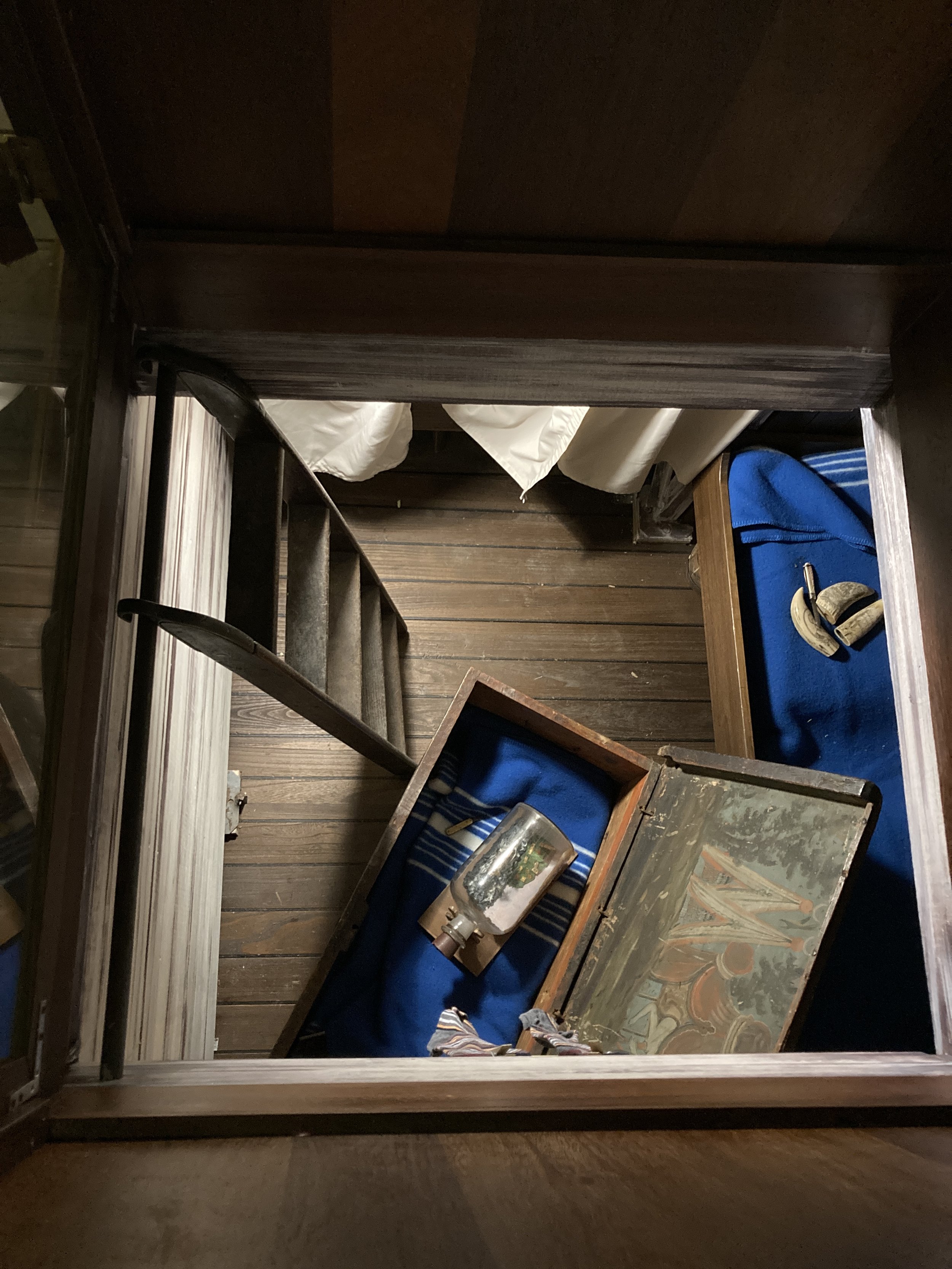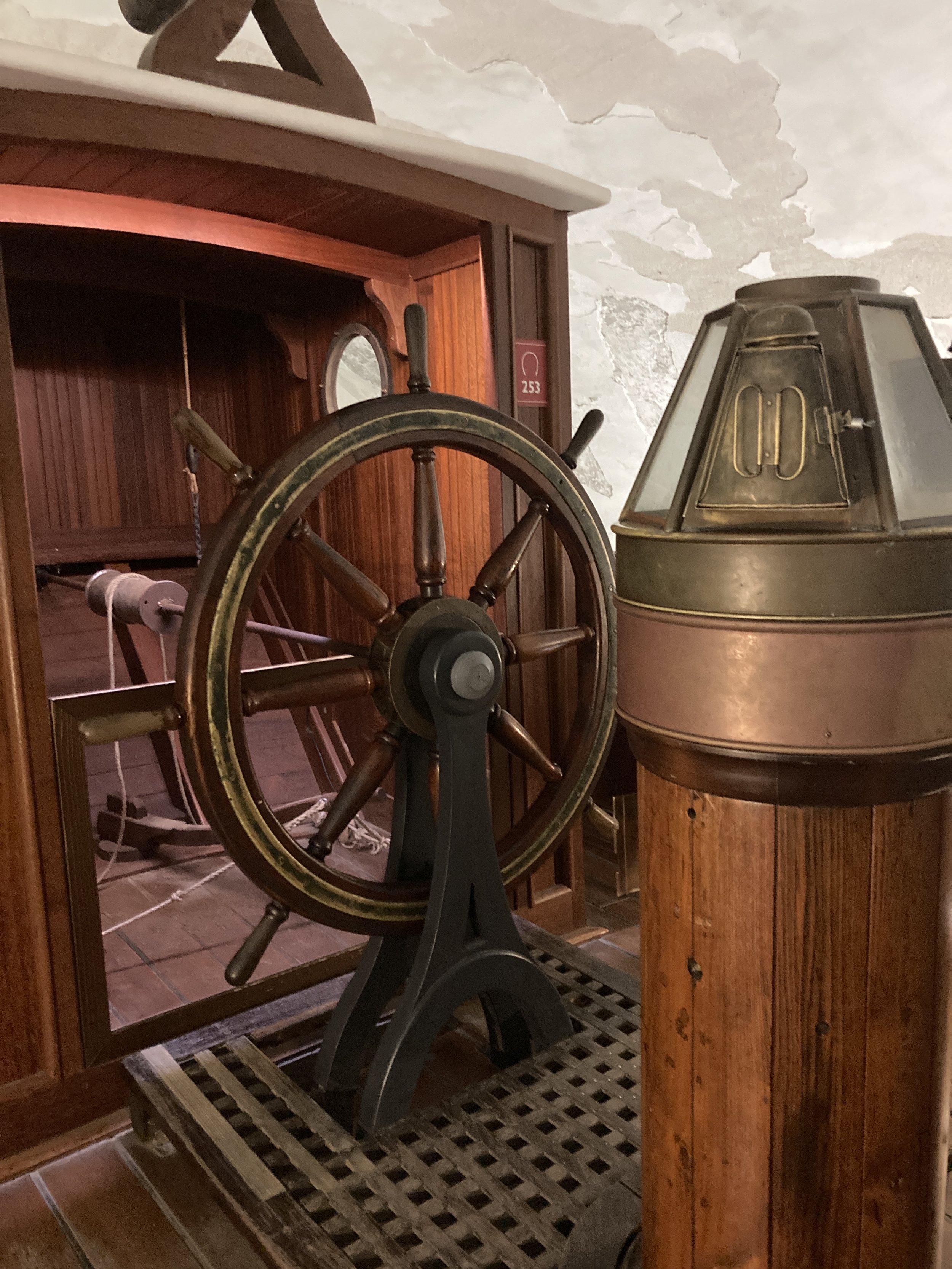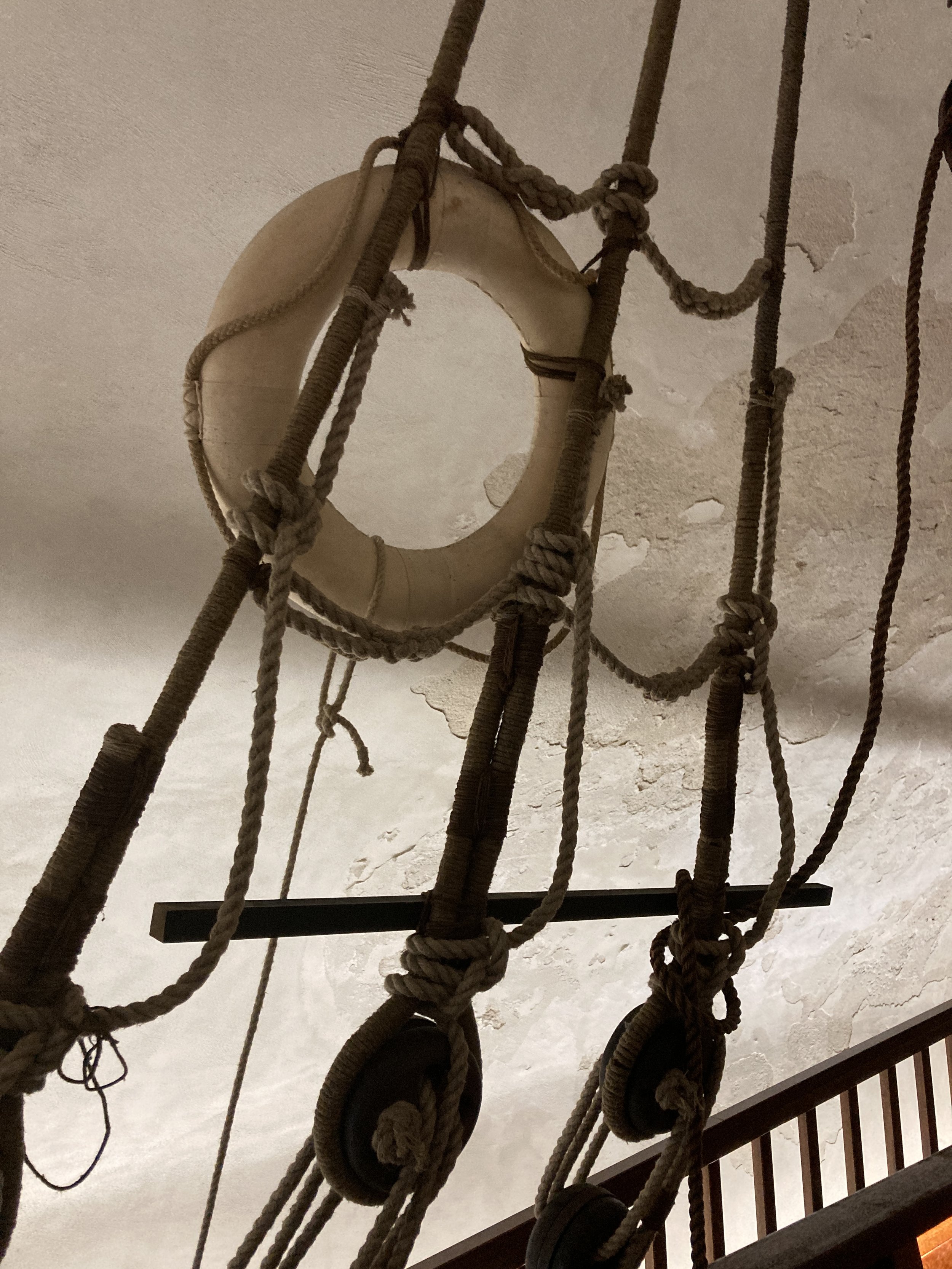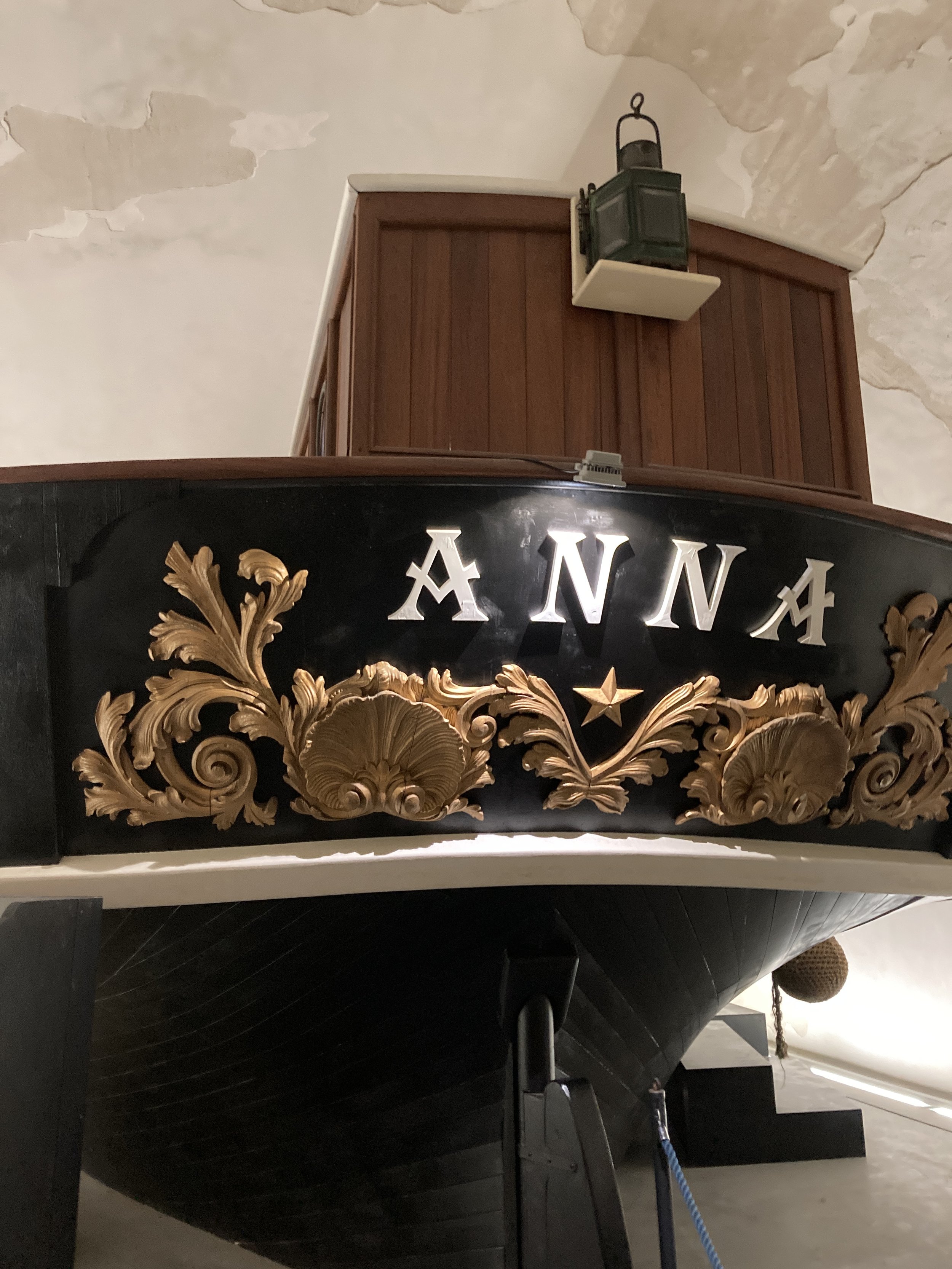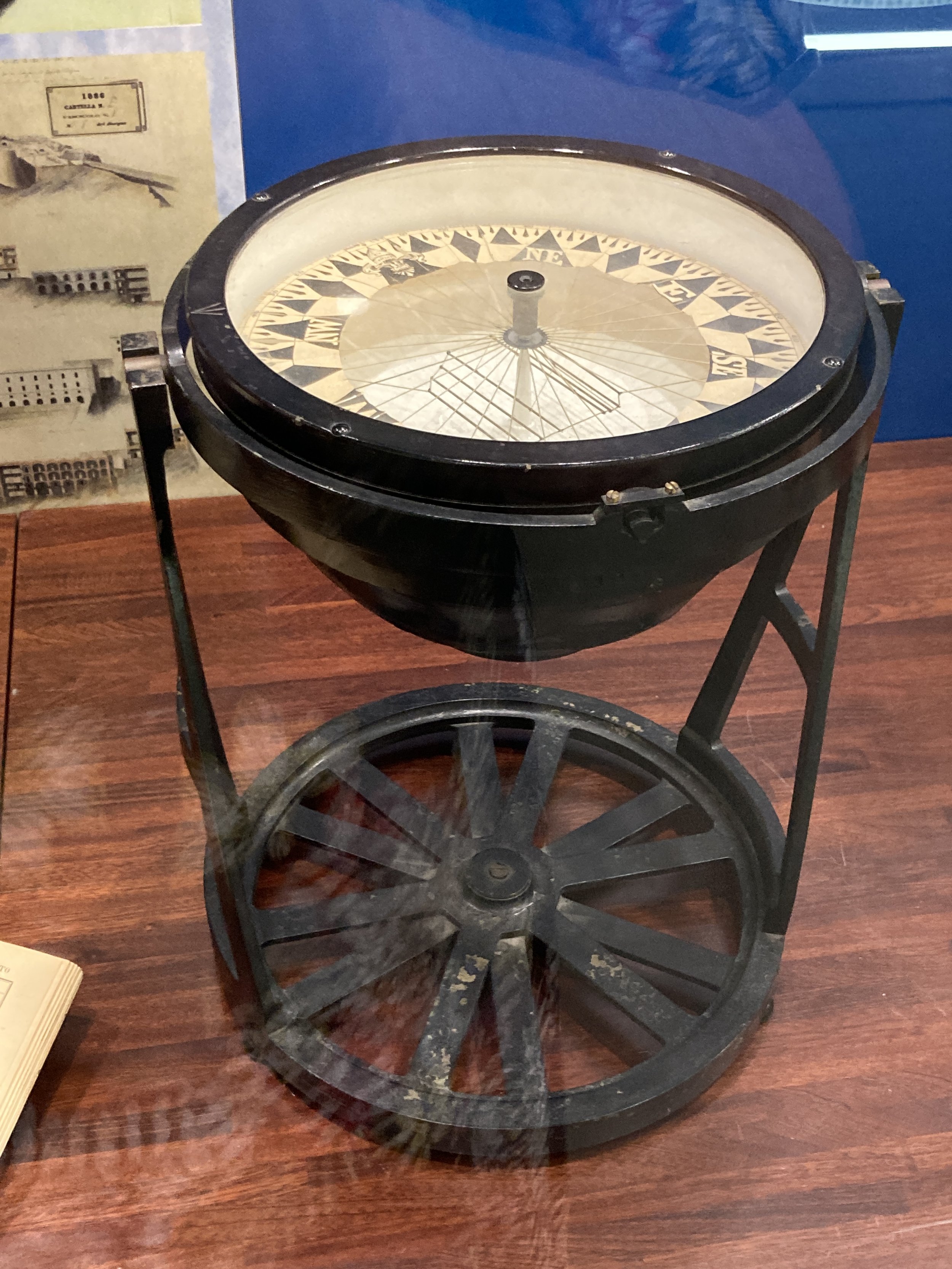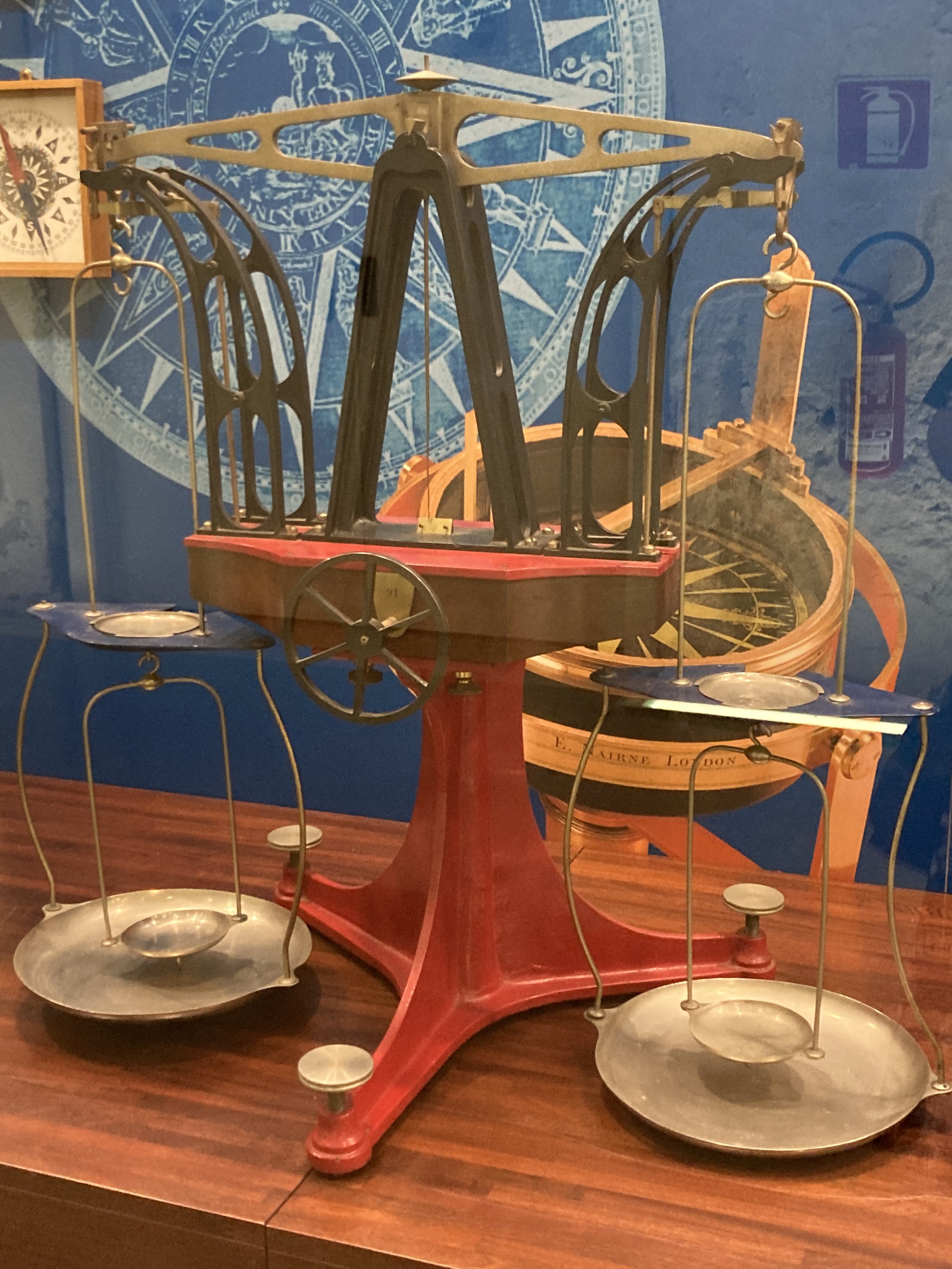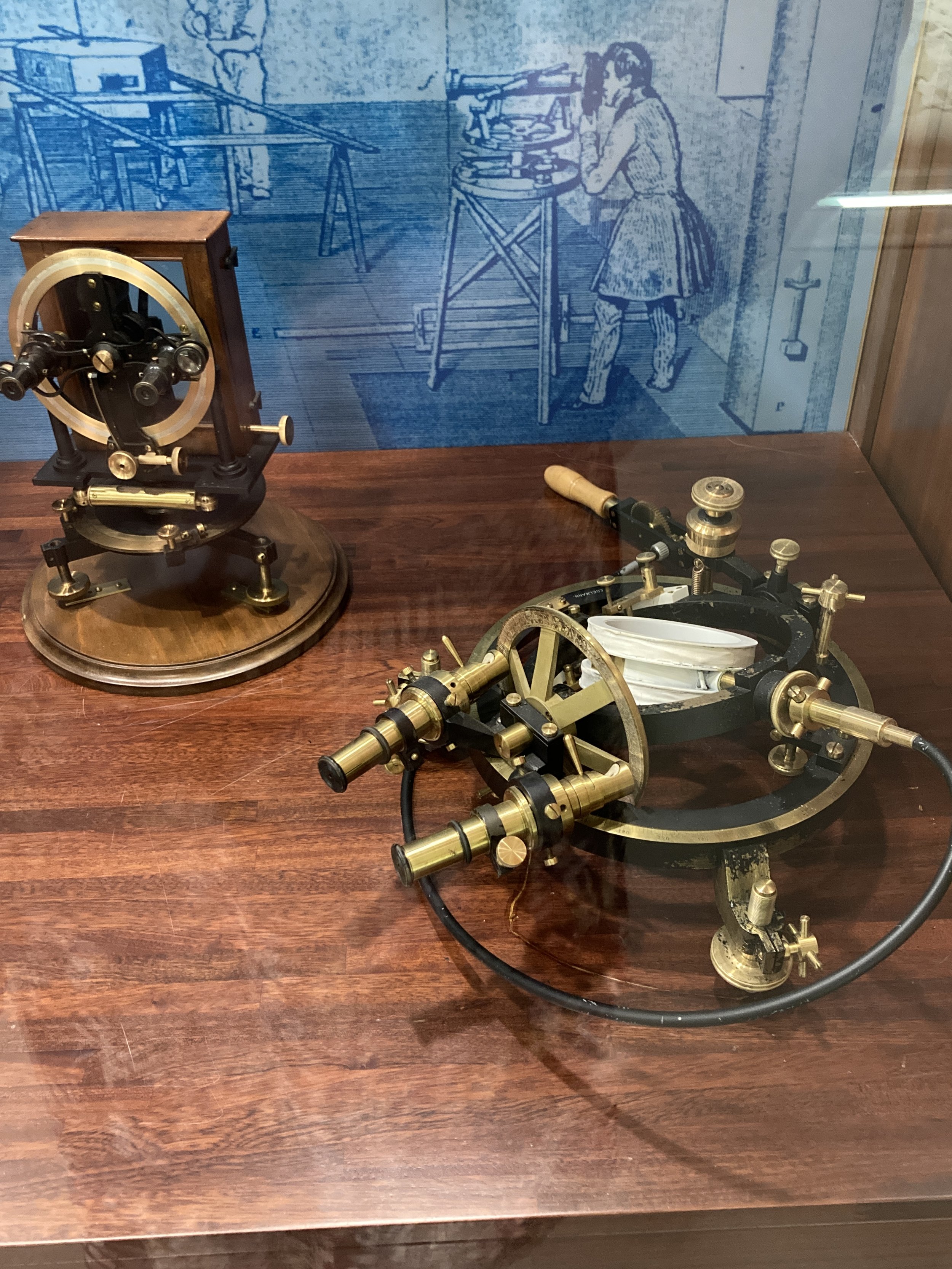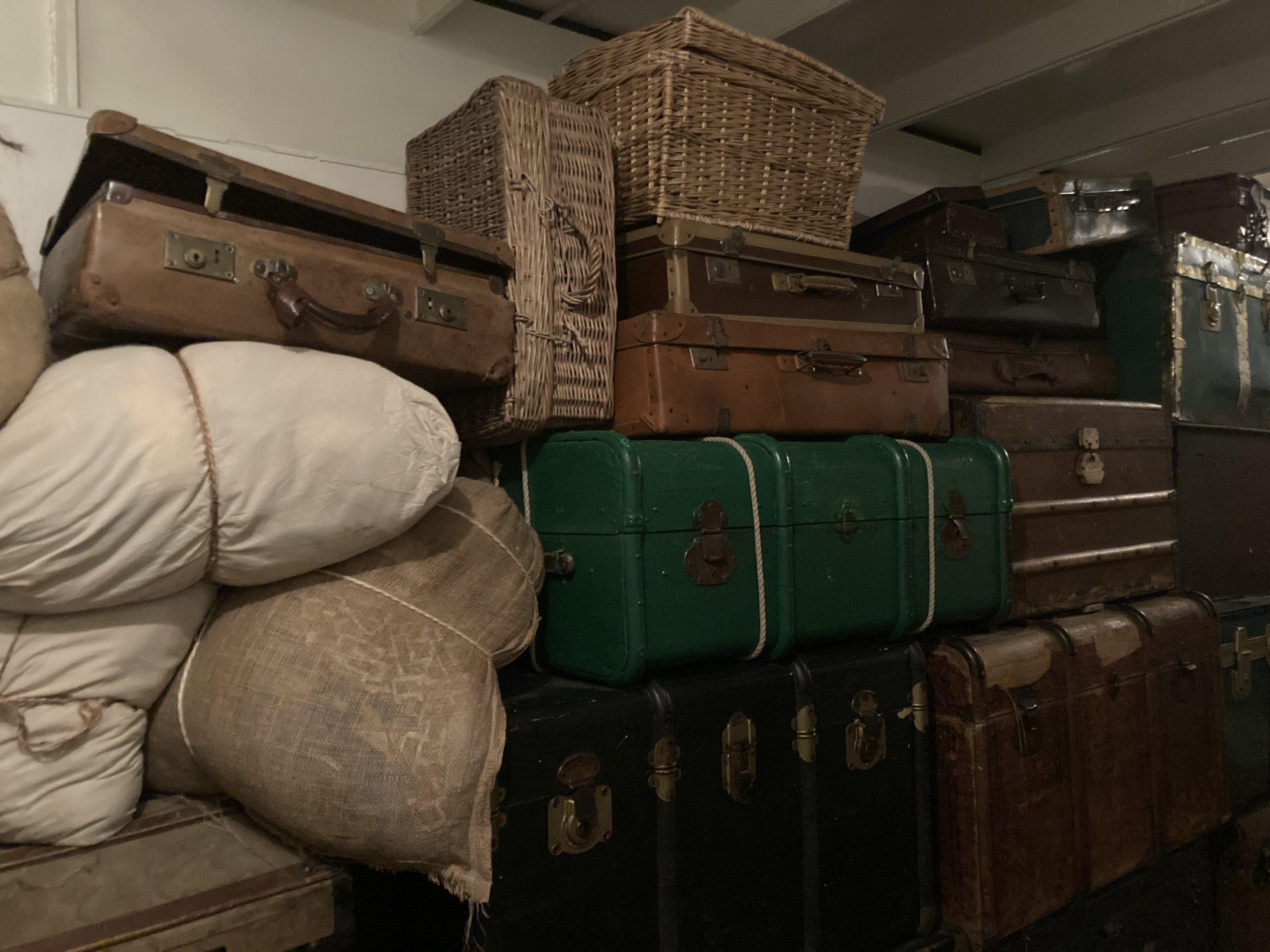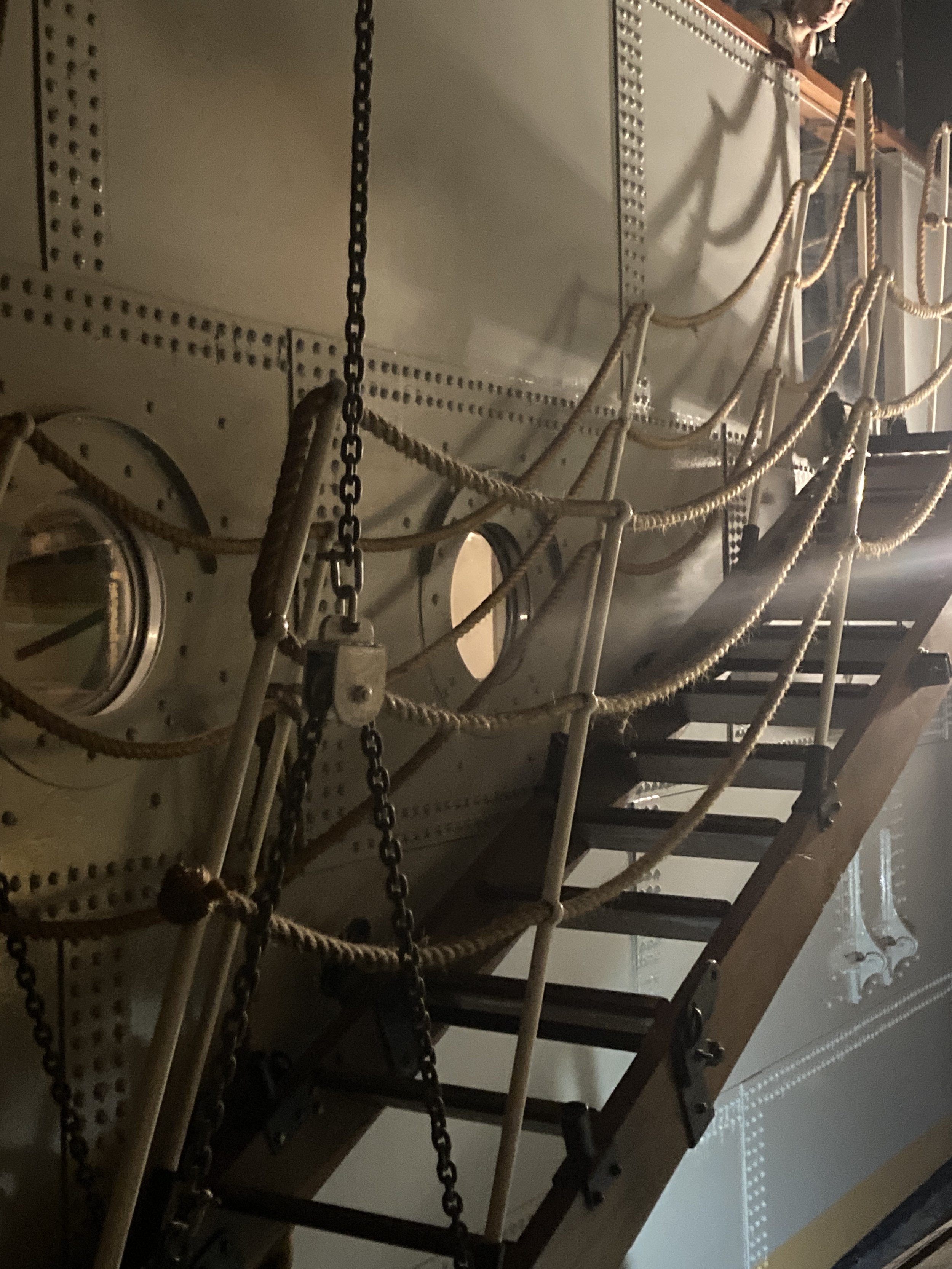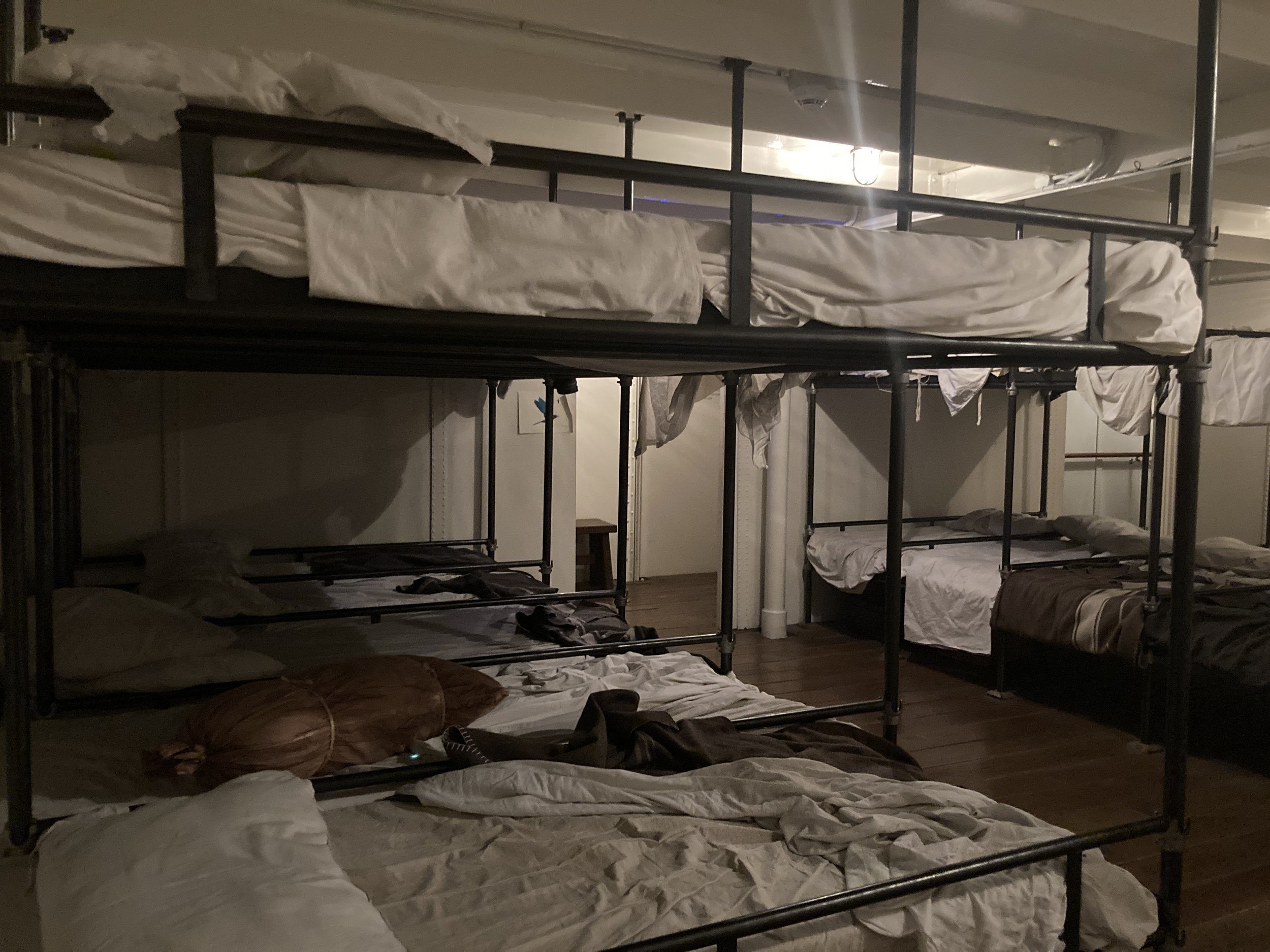A Maritime Museum in Genoa
Columbus, pointing the way to the New World.
The city of Genova (Genoa) is famous for many things, but above all it is an important port city. For centuries it has been a center of ship building, maritime trade, and exploration. Genova is also the place where Cristofo Columbo (Christopher Columbus) was born. Throughout the region there are statues of Columbus, a local hero, depicted with his arm outstretched pointing the way to America. Of course in reality it wasn’t America he was searching for, not to mention he sailed for Spain not Italy. No matter, he is still a revered native son of Genova.
In the spirit of its seafaring history, Genova is also the site of a wonderful maritime museum, the Galata Museo del Mare (Galata Museum of the Sea). The Galeta is the largest maritime museum in the Mediterranean region and was high on my teenage grandson’s list of places to visit during our recent vacation in Liguria. From our base in Rapallo, Genoa was an easy day trip, less than an hour away by train. So, off we went one morning to Genoa where the museum is just a short walk from the Principe train station.
Genoa’s Porto Antico, where the Galata Museo del Mare is located.
Located in the Porto Antico (Old Port) area, the museum traces local history from the creation of the port, the construction of sailing vessels, the growth of trade, the work of the sailors and merchants, and the life of Columbus. There are also exhibits about Genoa as a point of embarkation for those emigrating from Italy, modern shipping and commerce, and the more recent arrival of immigrants to Italy. All this and a submarine exhibit too. For anyone interested in beautiful old wooden ships and maritime history this is a great place to visit.
The museum is spread over 4 floors. The exhibits are organized chronologically, with good signage in both Italian and English. The story begins on the ground floor with maps, illustrations, and exhibits dedicated to the earliest life of the port. One room is dedicated to the life of Columbus, with detailed models of his three famous ships. Another room is full of helmets, spears, cannons, and armor related to the port’s historic military role.
The largest exhibit on the first floor is a full size reproduction of a galleon ship. This is a hands (and feet) on exhibit - climb aboard, admire the beautiful craftsmanship, and get a feel for the sights and sounds of life on a 17th century ship. Fun!
A 17th century Genovese galleon vessel
The exhibit continues with aspects of the sailor’s daily life in scenes set around the ship. You can even try your hand at rowing the heavy oars. Kids love these hands on experiences.
The next floors are all about ships and sailing. Included is another large ship, this time a reproduction of the brigantine Anna. The era comes alive as you peer into the captain’s quarters, the map room, even the galley kitchen. Walk the decks, take a turn at the wheel, and you can almost feel the ship rising and falling with the waves. The detail is amazing.
The displays of navigational instruments and models of ships are impressive. Imagine those early sailors, with no satellite or radar or high tech communication methods, sailing off into the unknown. Che coraggioso!
I particularly enjoyed the exhibits about Italian emigration. After all, this is the story of my Italian great grandfather, Pasquale Marino.
The exhibit begins with a walk through an Italian neighborhood. Hear Italians while they lean out their windows and talk across the piazza about leaving their homes (via video technology).
Then go to the port’s office where the officer asks for your documents and gives you a passport, board the ship, and walk through the male and female dormitories to get a feel for life onboard. The rustic bathrooms, dining room, and ship’s hospital make clear that this was no luxury voyage for most of the people on board.
Finally, arrive to your destination, present your paperwork, and feel what it’s like to enter an unknown country. I am not sure who designed this exhibit, but it’s brilliant.
The uppermost exhibit floors display models of modern vessel and tell of more recent explorers. There is also a moving area telling the stories of the recent wave of immigrants to Italy.
Lastly, there is the submarine, which sits in the harbor. Inside the museum are exhibits about the vessel which give a feel for its technology and inner workings. The submarine itself was closed for cleaning the day we visited, but usually is available for visits.
The Porto Antico area also houses an aquarium, interesting ships anchored in the harbor, and several restaurants. After a harbor side lunch we hopped the train back to our base in Rapallo, having learned a lot about ships and Genoa’s maritime history.




